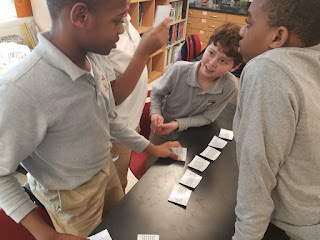As preteens, my Middle School students are working hard to establish their identities. Part of this identity development includes understanding the issues they will soon face as adults, and guiding them to informed opinions. To this end, I build a lot of discussion about genetic engineering into my unit on DNA and heredity.
In this activity, students are given a chance to debate and discuss different real uses of genetic technology, working toward an understanding of where THEY draw the line. It is important to emphasize with students that their opinion may differ from the person next to them, and that that is okay. We model how to disagree respectfully and I post sentence starters on the front board that students can refer to as needed during the discussions.
During the activity, each group of students receives 12 cards, each explaining a different real life example of genetic engineering. Students are then tasked with discussing and ranking the cards, on a scale from Never Okay to Always Okay.
For example, one card reads "Dog breeders bred pugs to have short muzzles because owners think this trait is cute. This makes it harder for pugs to breath."
As they discuss, students are analyzing and grappling with the pros and cons of different uses of genetic technology. They begin to realize what they believe is okay and what they believe is not okay. They are becoming informed decision makers.


